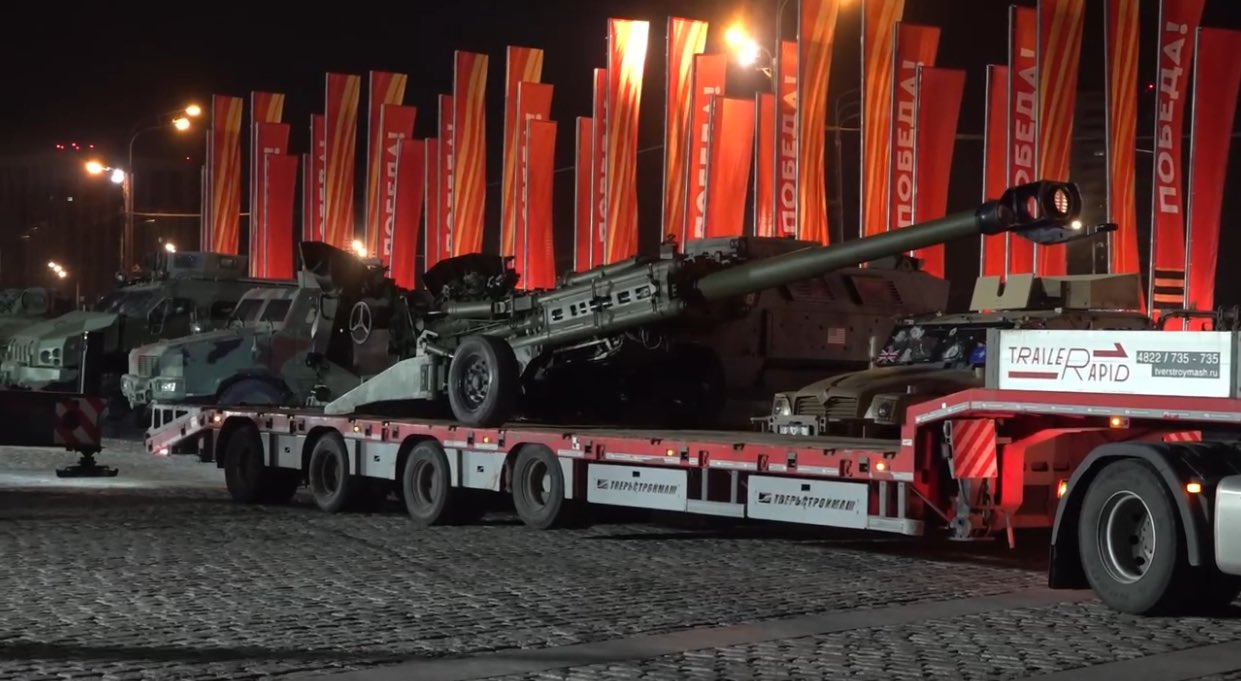SOURCE: AFI

oklonnaya Hill in Moscow, a site steeped in history and significance, has recently become adorned with a new array of trophies. These trophies, however, are not the traditional symbols of victory in battle, but rather the spoils of conflict from various corners of the globe. Amidst the backdrop of political tension and international scrutiny, the display of military hardware on Poklonnaya Hill serves as a testament to Russia’s perceived victories and strategic prowess.
Among the notable additions to the collection are several pieces of equipment that reflect a diverse array of origins and capabilities. The M777 howitzer, a staple of modern artillery, stands tall alongside American armored vehicles such as the “HMMWV M1151” and “HMMWV M998,” showcasing the technological might of the United States.
Not to be outdone, British and French contributions make their presence felt with the inclusion of the armored ambulance AT105 “Sakson” and the wheeled tank “AMX-10RCR” respectively. These vehicles, once symbols of foreign military power, now find themselves on display as trophies of Russian military success.
The assortment of vehicles continues with offerings from Austria, Australia, Finland, South Africa, and Ukraine. The Austrian “Pinzgauer 712M,” Australian Bushmaster car, Finnish Sisu Pasi XA-180/185, and South African Mamba MK2 armored car all stand as testaments to the global reach of conflict and the acquisition of foreign military assets.
However, amidst the display of military hardware, a shadow of controversy looms. The recent remarks by Jens Stoltenberg, Secretary General of NATO, have sparked debate over the intentions behind Russia’s ostentatious display. Stoltenberg has denounced the showcase as a form of “hybrid aggression,” suggesting that it creates a false narrative of NATO’s involvement and defeat in a hypothetical conflict.
In response to Stoltenberg’s remarks, Russian officials have defended the showcase as a legitimate display of military achievements and technological prowess. They argue that it serves as a reminder of Russia’s ability to defend its interests and protect its sovereignty in the face of external threats.